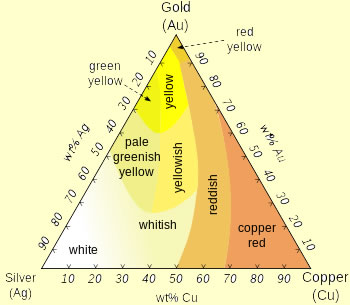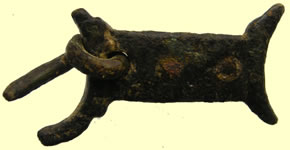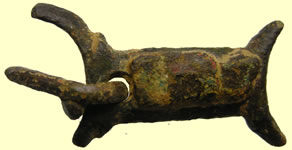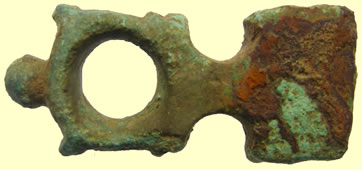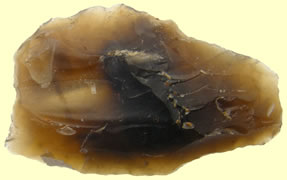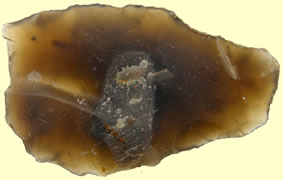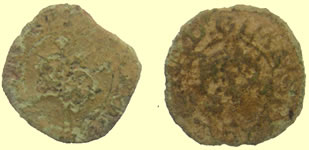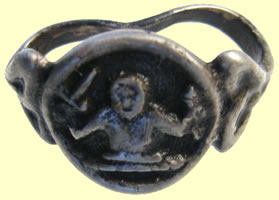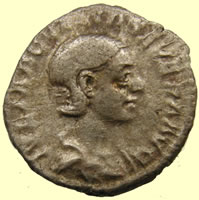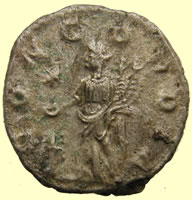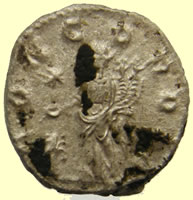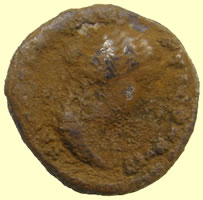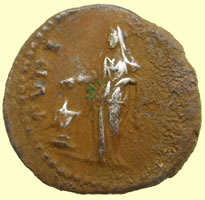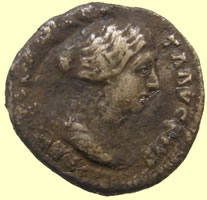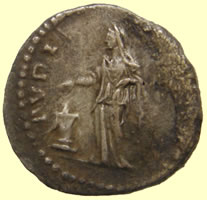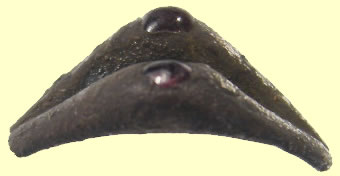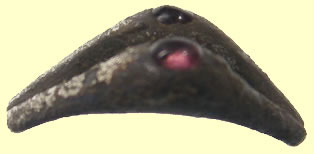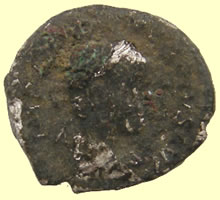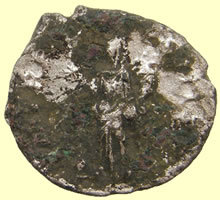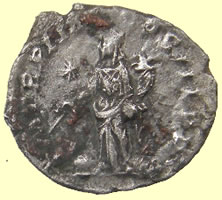

Metal detecting holidays in England with the World's most successful metal detecting club.
Twinned with Midwest Historical Research Society USA
| 2013 Nov finds page |
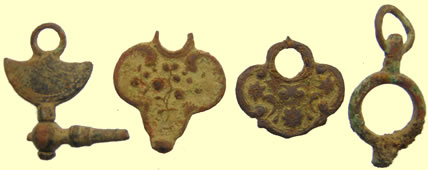 |
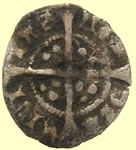 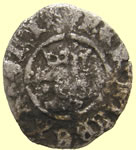 |
||
| Georgian watch winders | 1422-61 Henry VI hammered silver half penny - Saltire- Leaf issue SL.1 Obv hENRIC REX ANGLIx Rev CIVI/TAS/LON/DON - London mint |
||
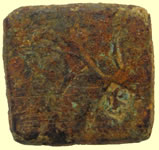 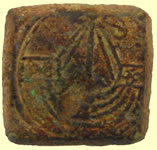 |
 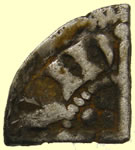 |
||
| 14thC British coin weight - gold noble - St. George cross on reverse | 1247 Henry III hammered silver voided long cross farthing Obv /VND - London mint |
||
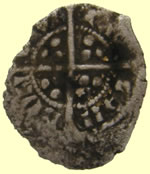 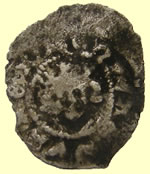 |
 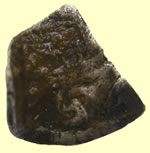 |
||
1285/6 Edward 1st hammered silver farthing - new issue inner circle both sides - Type 28 Oval flan Rev EDWARDVS REX A Rev CIVI/TAS/LON/DON - London mint |
1215 Henry III hammered silver short cross farthing | ||
 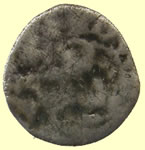 |
|
||
| Very worn medieval hammered silver farthing | Medieval strap end | ||
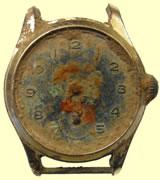 |
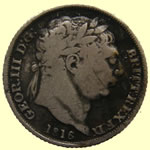 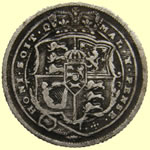 |
||
| Gold plated wrist watch | 1816 George III milled silver sixpence | ||
|
|||
Ancient gold ingot 11.7g, 34.99mm L - reported as treasure to museum Perfect weight to make 2 full Celtic gold staters |
|||
 |
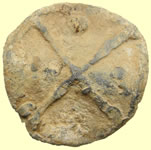 |
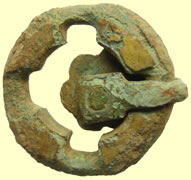 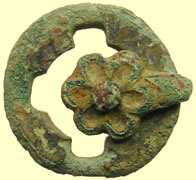 |
|
| Army badge - V ME ?? | 15thC lead token | Unknown medieval buckle fitting ?? | |
 |
 |
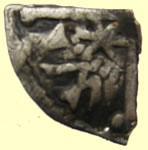  |
|
| 19thC livery button | 19thC hunting button | Scottish 1249 Alexander III hammered silver farthing Obv ALEXANDER REX Rev /WI/ - moneyer Wilam of Fres mint |
|
 |
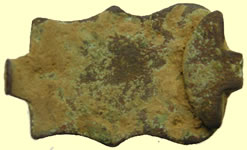 |
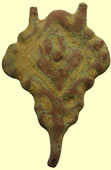 |
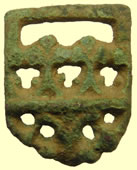 |
| London District postal service | 18thC clog fastener | 16thC Tudor clothing fastener | 16thC Tudor clothing fastener |
|
 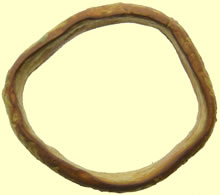 |
||
| Medieval buckle | 17thC copper finger ring | ||
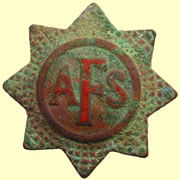 |
 |
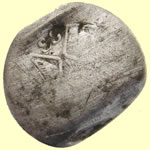 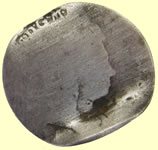 |
|
| Auxiliary fire service badge | June 1886/7 Victoria Jubilee medallion | 1714- 27 George 1st milled silver sixpence - love token - issued by South Sea Company | |
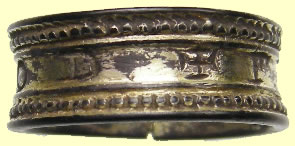  |
|||
16thC gilded silver religious ring - reported to museum as treasure + FERE GOD + (means fear god) 4.6g, 21.05mm dia |
|||
 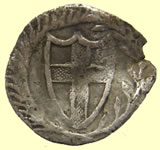 |
 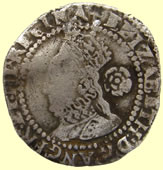 |
||
| 1649 Commonwealth hammered silver penny | 1582 Elizabeth hammered silver three pence - Sword mint mark | ||
 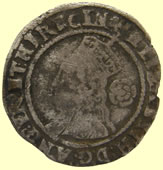 |
 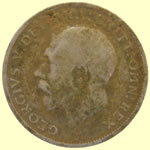 |
||
| 1578 Elizabeth hammered silver three pence - Greek cross mint mark | 1921 George V milled silver sixpence | ||
 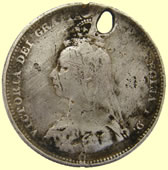 |
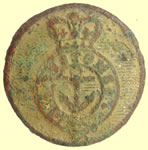 |
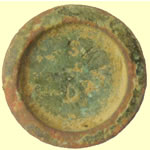 |
|
| 1887 Victoria milled silver shilling (12 pence) | H.M. Customs O/R's Button In use 1820 - 1836 ? button |
Victorian 4 Drams trade weight | |
|
|||
| Victorian trade weight - Crown VR cipher | 1670's Charles II trade weight - Crown C cipher London | 18thC musket flint | |
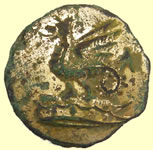 |
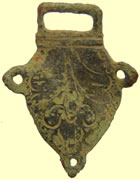 |
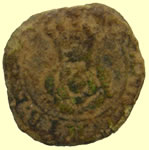 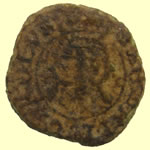 |
|
| 19thC livery button | 17thC clothing fastener | 1634 Charles 1st hammered copper rose farthing | |
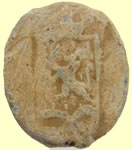 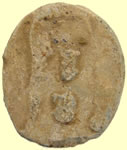 |
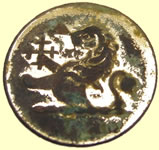 |
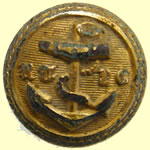 |
|
| 17thCc Dutch lead bale seal | 19thC livery button | UNITED KINGDOM Royal London Yacht Club R. T. Y. C. - R. T. Y. C. London, England In use 1837 - 1901 |
|
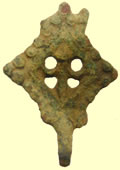 |
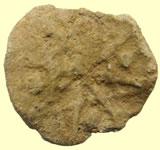 |
 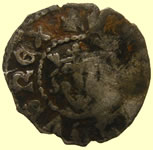 |
|
| 16thC Tudor clothing fastener | 15thC lead token | 1300-10 Edward 1st hammered silver farthing - Type 28 Obv + EDWARDVS REX Rev CIVI/TAS/LON/DON |
|
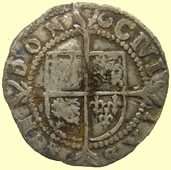  |
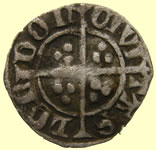 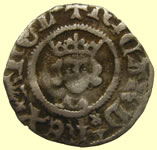 |
||
| 1587-9 Elizabeth 1st hammered silver half groat - Crescent mint mark | 1377-1399 Richard II hammered silver half penny - Type 2 (f) Obv + RICARD x REX x ANGL' Rev CIVI/TAS/LON/DON - London mint |
||
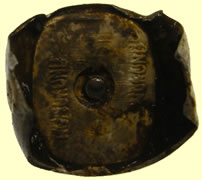 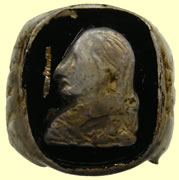 |
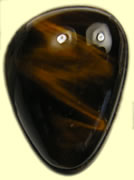 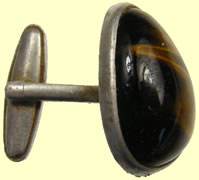 |
||
| 20thC base metal intaglio ring | Victorian silver tiger stone cuff link | ||
  |
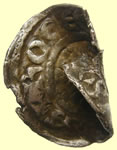 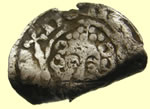 |
||
| 17thC glass bottle seal | 1217/8 Henry III hammered silver short cross penny - Class 7a Obv + hENRICVS REX Obv + ROGER OF R CA - Moneyer Roger of R - Canterbury mint |
||
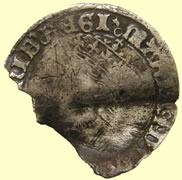 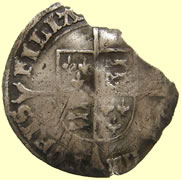 |
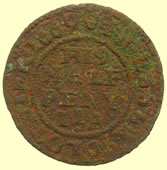 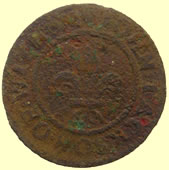 |
||
| 1553 Mary hammered silver groat - mint mark pomegranate | 1669 John Jackson, clothier of Witham Essex 'His half penny' hammered copper trade half penny Ref Norweb 1428 |
||
|
|||
| 5thC Roman bronze key - not seen this type with Saxon looking knops on before | |||
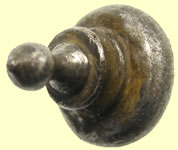 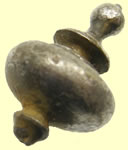 |
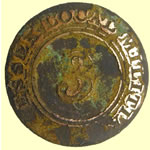 |
||
| Georgian silver finial | '3rd Essex Local Militia gilt (b/m: Charles Jennens. London). This is the 3rd Reg't of the Essex Local Militia. Tim' |
||
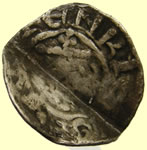  |
 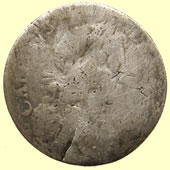 |
||
1189 Richard 1st hammered silver short cross penny - Class 2 Obv + hENRICVS REX Obv + VLARD ON CAN - Moneyer Vlard of Canterbury mint |
1680 Charles II milled silver four pence | ||
 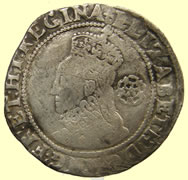 |
 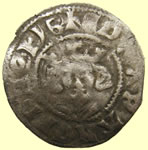 |
||
| 1582Elizabeth 1st hammered silver sixpence- sword mint mark | 1344 Edward III hammered silver penny - Florin issue Obv +EDWAR ANGL DNS hYB Rev CIVI/TAS/LON/DON - London mint |
||
 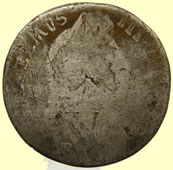 |
 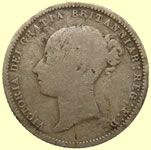 |
||
| 1696 William III milled silver shilling (12 pence) Exeter mint | 1872 Victoria milled silver sixpence | ||
  |
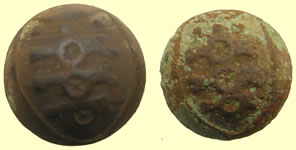 |
||
| 1884 Victoria milled silver shilling (12 pence) | 18thC Royal artillery cuff buttons | ||
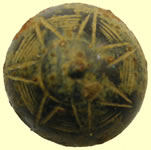 |
 |
  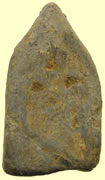 |
|
| 17thC button | Medieval lead hanging weight | ||
 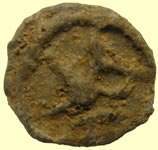 |
  |
||
| 15thC lead token | 1936 George V milled silver sixpence | ||
 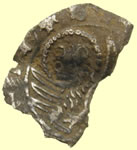 |
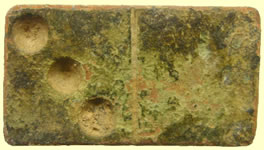 |
||
Soldino of Antonio Venier (ANTO.VEN-ERIO.DVX.)
Obverse description: Doge kneeling left holding banner. Often mint control marks to right (a star/letters). |
Georgian domino | ||
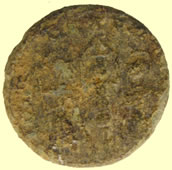 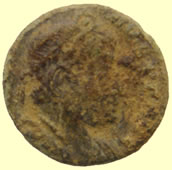 |
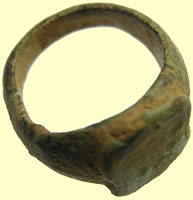 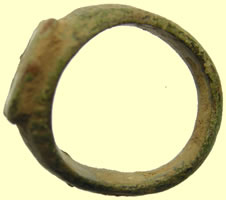 |
||
| Mid 4thC House of Constantine Roman bronze coin - two soldiers standing | Georgian copper signet ring | ||
 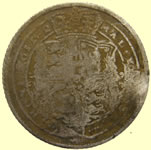 |
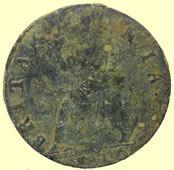 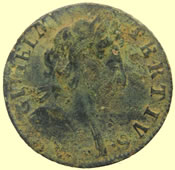 |
||
| 1818 George III milled silver sixpence | 1696 William III milled copper half pence | ||
 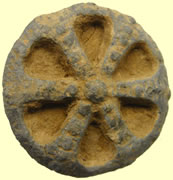 |
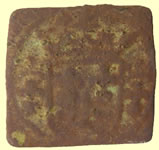 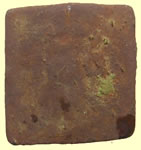 |
||
| 17thC lead mount | 1422- 61 French gold half Ecu coin weight - 3 Lis in a shield type with initials both sides | ||
  |
  |
||
| 1862 Victoria milled silver sixpence | 1890 Victoria milled silver shilling | ||
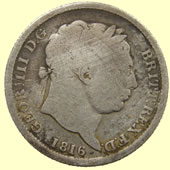 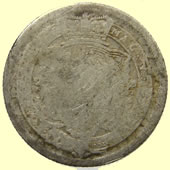 |
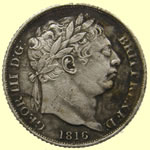 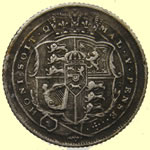 |
||
| 1816 George III milled silver shilling (12 pence) | 1816 George III milled silver sixpence | ||
  |
 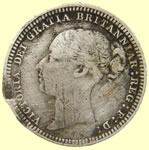 |
||
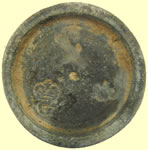 |
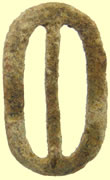 |
 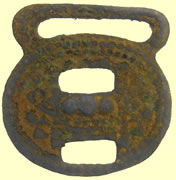 |
|
| George 1st trade weight - Crown G cipher London | 19tHC baldric buckle | 18thC clog fastener | |
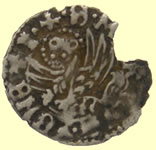 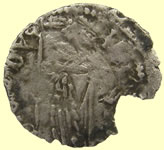 |
 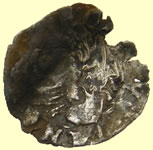 |
||
Soldino of Antonio Venier (ANTO.VEN-ERIO.DVX.)
Obverse description: Doge kneeling left holding banner. Often mint control marks to right (a star/letters). |
Soldino of Antonio Venier (ANTO.VEN-ERIO.DVX.)
Obverse description: Doge kneeling left holding banner. Often mint control marks to right (a star/letters). |
||
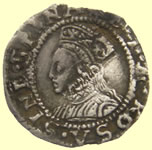 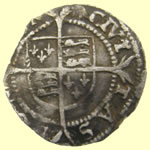 |
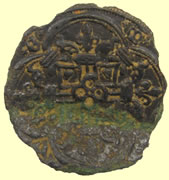 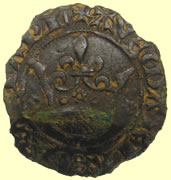 |
||
| 1566 Elizabeth 1st hammered silver penny | 1340 AD French Jetton Crown introduced in 1340 by Philip VI (1328-50) Royal Crown with annulet and rosettes across body of crown Obv AVE MARIA GRACIA Rev A-V-E-M Rev Triple banded straight cross fleuretty Ref Mitchiner 469 |
||
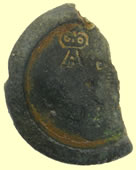 |
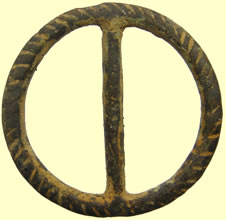 |
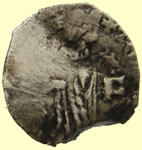 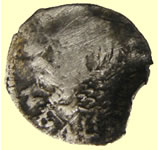 |
|
| 1704 Anne trade weight - Crown A cipher | Largest medieval annular buckle I have seen | Soldino of Antonio Venier (ANTO.VEN-ERIO.DVX.)
Obverse description: Doge kneeling left holding banner. Often mint control marks to right (a star/letters). |
|
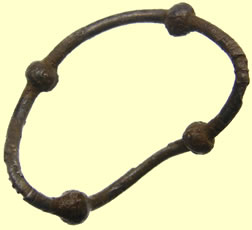  |
|||
Date: Medieval, 13th - 14th century - reported as treasure to museum Large Medieval knopped silver annular brooch - each knop is decorated with flowers 2.8g, 30.58mm Unique ID: NMS-D2A387 Similar to examples in Egan and Pritchard (2002, fig. 163 no. 1330 and 1333). |
|||
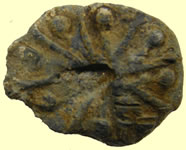 |
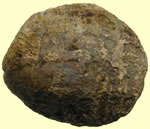 |
 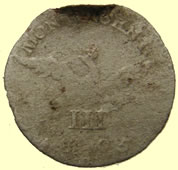 |
|
| 15thC lead token | 17thC lead token | 1805 German states Friedrich Wilhelm III - 3 Groschen silver coin Obv FRID WILHELM III BORUS REX |
|
 |
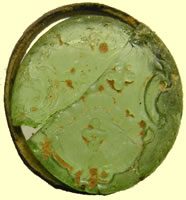 |
 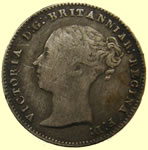 |
|
| 15thC lead token | Georgian fob glass intaglio | 1857 Victoria milled silver 3 pence | |
 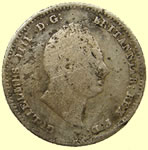 |
 |
||
| 1836 William IV milled silver four pence | Victorian silver cane band | ||
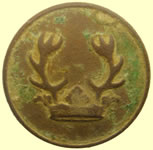 |
 |
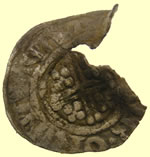 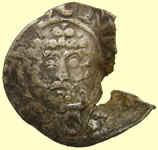 |
|
| 19thC livery button | Medieval annular buckle | 1215 Henry III hammered silver short cross penny Obv hENRICVS REX Rev ** .ON LVNI - London mint |
|
 |
 |
||
| 17thC clothing fastener | Georgian barrel spigot | ||
11,000 Stone Age flint scraper |
|||
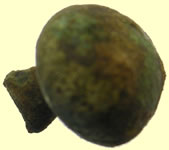 |
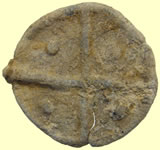 |
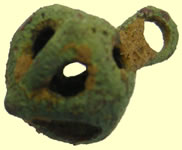 |
|
| 16thC Tudor button | 15thC lead token type 2 | 16thC Tudor button | |
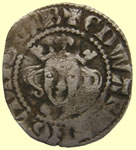  |
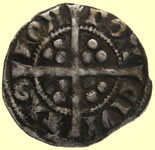 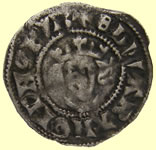 |
||
1300-1310 Edward Ist hammered silver penny - Type 10ab Obv +EDWARD R ANGL DNS hYB Rev CIVI/TAS/LON/DON - London mint |
1300-1310 Edward Ist hammered silver penny - Type 10cf Obv +EDWAR ANGL DNS hYB Rev CIVI/TAS/LON/DON - London mint |
||
 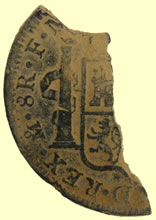 |
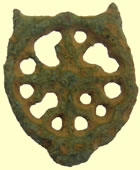 |
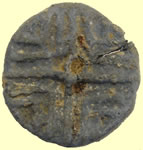 |
|
| Huge Spanish 1793 copper 8 reales - must be a forgery as these were silver issue | 16thC Tudor clothing fastener | 15thC lead token | |
|
  |
||
| 1634 Charles 1st hammered copper rose farthings | 1247 Henry III hammered silver voided long cross half penny Rev /ONC/AN - Canterbury mint |
||
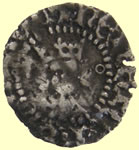 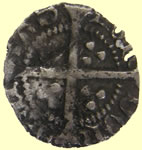 |
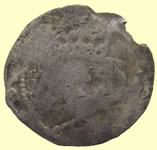 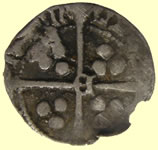 |
||
1413-22 Henry V hammered silver half penny Obv hENRIC'x REX :ANGL' Rev CIVI/TAS/LON/DON - London mint |
1461 Edward IV hammered silver penny - Durham mint B at centre of reverse cross
|
||
 |
 |
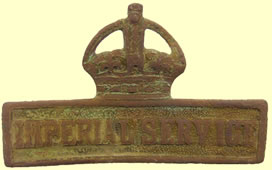 |
|
| 1500-1700 hooked mount | Georgian button | WWI Imperial service badge - Territorial force The Territorial Force (TF) was created on 1 April 1908 from the old Volunteers and Yeomanry and was a pure home defence force . In 1910/11 the Government polled units to see if there were members willing to serve overseas in time of crisis If a unit had 90% of its establishment volunteer, the soubriquet' Imperial Service' was conferred. Prior to the outbreak of WW1 only three Territorial Force infantry battalions met this challenge, the first was the 7th (Imperial Service) Battalion, the Duke of Cambridge's Own (Middlesex Regiment) followed by the 8th (Imperial Service) Battalion, the Duke of Cambridge's Own (Middlesex Regiment) and the 6th (Imperial Service) Battalion, the East Surrey Regiment. |
|
 |
 |
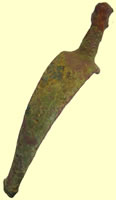 |
 |
| 20thC toy soldier | 1500-1700 mount | Georgian decorated spur | 17thC lead token |
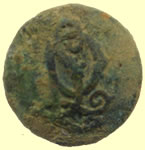 |
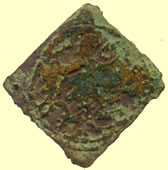  |
||
| 19thC livery button | Medieval coin weight | ||
  |
|
||
| Gold plated Army badge | 19thC silver livery ring Possible Murray clan ringHard to decipher what's in the left hand of the man, but everything else looks correct for a Scottish Clan named Murray.
|
||
  |
 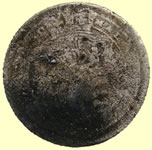 |
||
Irish 1216-1272 Henry III hammered silver voided long cross half penny Star by the head of Kings scepter - Ref IH31D-015 Obv HENRICVS REX III Rev V/ION - Moneyer Davi of Dublin mint |
1819 George III milled silver sixpence | ||
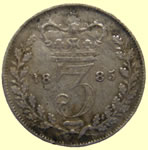 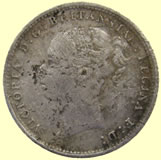 |
  |
||
| 1885 Victoria milled silver three pence | 1819 George III milled silver sixpence | ||
 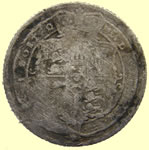 |
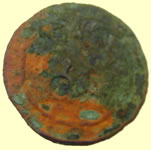 |
 |
|
| 1816 George III milled silver sixpence | French Infantry Button 89th Line Regiment Circa 1803-1814 |
15thC lead token | |
 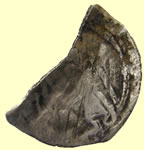 |
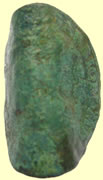  |
||
1509-23 Henry VIII hammered silver sovereign penny Durham, Bishop Ruthall - TD by shield |
19thC Portuguese copper 10 Reis Obv PORTVGALIAE ET ALGARBIORUM P REGENS Rev IOANNES DEI GRATIA |
||
 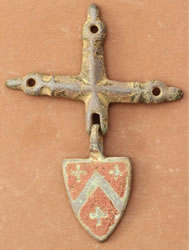 |
|||
| C13thC Medieval heraldic harness pendant - researching owner | |||
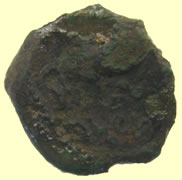 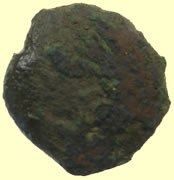 |
 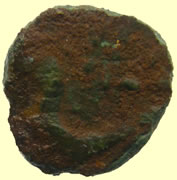 |
||
| Celtic bronze unit - needs more cleaning - right facing horse | Possible Celtic bronze unit - needs more cleaning | ||
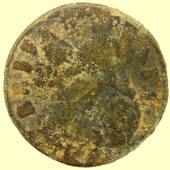 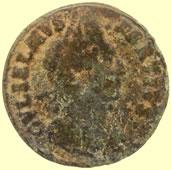 |
  |
||
| 169 William milled copper half penny | 1834 William IV milled silver sixpence | ||
  |
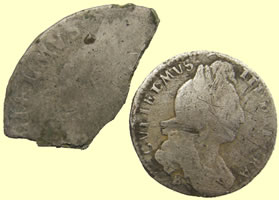 |
||
| 1696 William III milled silver sixpence | Fragment of a 17thC William III milled silver full crown (60 pence) monster sized coin next to a sixpence | ||
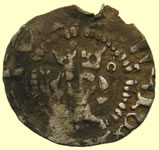 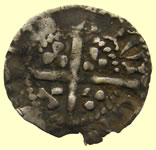 |
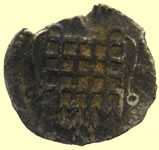 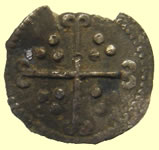 |
||||||||||
1413- 22 Henry V hammered silver half penny - broken annulets both sides of crown - Type 5 Obv +hENRICx REX ANGL Rev CIVI/TAS/LON/DON - London mint
|
1583 Elizabeth 1st hammered silver half penny - 'A' i.m. | ||||||||||
  |
|||||||||||
| 16thC Tudor fretwork silver button - reported as treasure to museum | |||||||||||
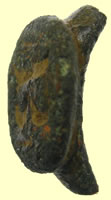 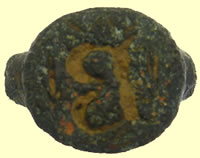 |
  |
||||||||||
| c13thC Medieval seal ring 'B' | 1940 George V milled silver sixpence | ||||||||||
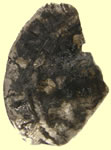 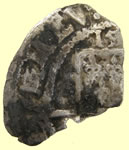 |
  |
||||||||||
| 16thC 15** Elizabeth 1st hammered silver sixpence fragment | 1247 Henry III hammered silver voided long cross half penny | ||||||||||
 |
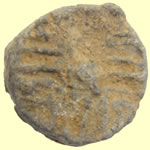 |
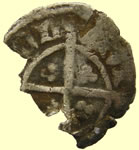 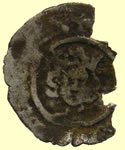 |
|||||||||
| Unusual Georgian flat button | 15thC lead token | 1377 -99 Richard II hammered silver half penny Obv **x REX ANGLx Rev CIVI/TAS/LON/DON - London mint 13.82mm |
|||||||||
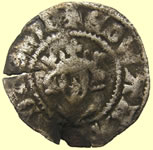  |
  |
||||||||||
1300-1310 Edward Ist hammered silver penny - Type 10cf Obv +EDWAR ANGL DNS hYB Rev CIVI/TAS/LON/DON - London mint |
1216 Henry III hammered silver short cross halfpenny Obv hENRICVS REX Obv ** ER.ON ** |
||||||||||
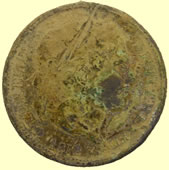 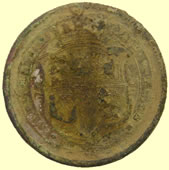 |
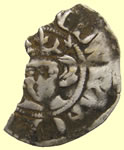  |
||||||||||
| 1818 George III milled silver shilling forgery | 1344 Edward III hammered silver penny - Florin issue Obv +EDWR ANGL DNS hYB Rev CIVI/TAS/LON/DON - London mint |
||||||||||
 |
 |
 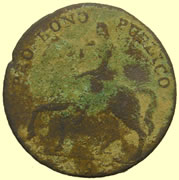 |
|||||||||
| 15thC lead token - type 2 |
|
1792 Coventry copper half penny - Condor token Obverse; Lady Godiva on horseback, 1792 below, PRO BONO PUBLICO above. Reverse; Elephant and Castle, COVENTRY HALFPENNY above |
|||||||||
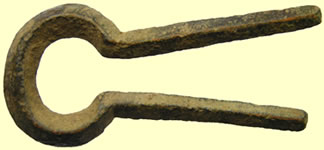 |
 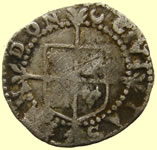 |
||||||||||
| Georgian Jew's harp | 1578-9 Elizabeth 1st hammered silver penny - crescent mint mark | ||||||||||
 |
 |
 |
|||||||||
One piece Navy button HONI SOIT QUI MAN Y PENSE PACKET Honi soit qui mal y pense (Old French: shame upon him who thinks evil of it) RN - Packet Service c.1800-1811 |
Post Medieval cast copper alloy single loop buckle frame. 1500-1650 AD |
WWII St Johns Ambulance lapel badge | |||||||||
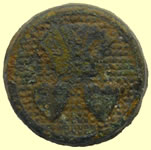 |
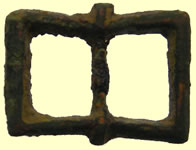 |
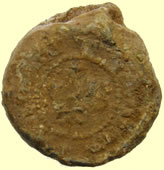  |
|||||||||
| 17thC Charles II 'hearts and crown' copper button | Cast copper alloy buckle frame 1500 -1700 |
Post medieval lead bale seal | |||||||||
 |
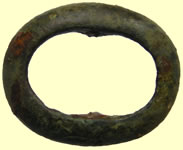 |
 |
|||||||||
| Georgian clay pipe | Cast copper alloy double-looped sub-annular shoe or knee buckle with bevelled internal edge Circa 1650-1720 |
|
|||||||||
 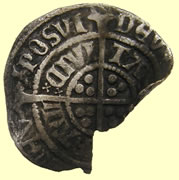 |
 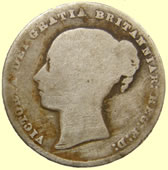 |
||||||||||
1485 - 1509 Henry VII hammered silver half groat - Archb Savage Keys by neck Obv *** GRAxREXxANG ** Rev CIVI/TAS/EBO/RACI - York mint |
1867 Victoria milled silver shilling | ||||||||||
 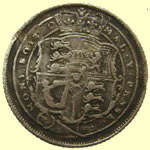 |
 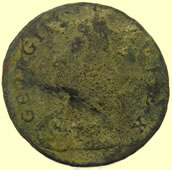 |
||||||||||
| 1819 George III milled silver sixpence | 1734 George II milled copper half penny | ||||||||||
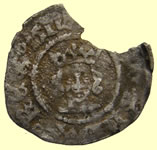 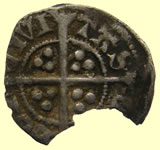 |
 |
||||||||||
1351-77 Edward III hammered silver half penny - 4th coinage - Type 14 , annulet stops Obv + EDWARDVS o REX o AN Rev CIVI/TAS/LON/DON |
15thc casket key | ||||||||||
 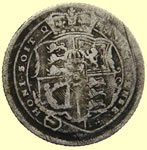 |
 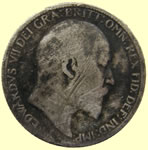 |
||||||||||
| 1817 George III milled silver sixpence | 1907 Edward VII I milled silver sixpence | ||||||||||
  |
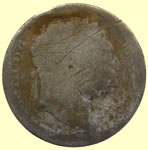 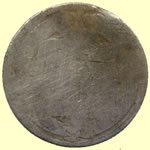 |
||||||||||
1247 Henry III hammered silver voided long cross hal penny Obv hENRICVS REX III Rev /VID/ON - Moneyer David of London mint |
1816 George III milled silver sixpence | ||||||||||
 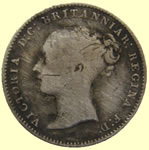 |
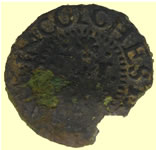 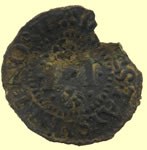 |
||||||||||
| 1865 Victoria milled silver three pence | 17thC James Tayspill of Colchester Essex hammered copper trade farthing Ref Norweb 1242 |
||||||||||
Cleaned up silver Roman Julia Avita Mamaea was the second daughter of Julia Maesa, a powerful Roman woman of Syrian origin and Syrian noble Gaius Julius Avitus Alexianus.
|
|||||||||||
It will probably come as no large surprise that the 2nd - the denarius needing the least cleaning - is Julia Mamaea - you can read a good deal of the legend as-is, the initial "IVLIA" is quite clear. This precise combination of features on the reverse, "CONCORDIA" with Concord standing left, pouring libation from patera over small lighted altar and holding double cornucopiae; star in left field, is unique to her, so far as I have been able to determine in a quick search of the Severan women. Also, the hair style is fairly distinctive, too. Generally the Imperial women each had their own personal style or series of styles and didn't copy each other (except Lucilla who copied her mother, Faustina Jr, with a very round, low-placed bun and otherwise unadorned hair style). Mark |
|||||||||||
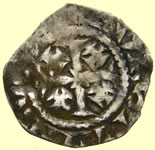 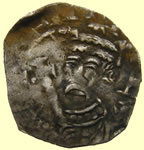 |
|||||||||||
1158 -1189 AD Henry II hammered silver penny ' Tealby' cross and crosslet type. 19.10mm,1.34g - sent to EMC for recording Many thanks for the excellent images of this find, which I have recorded as EMC 2013.0384. This is class F, Ipswich, Turstain: probably from the same reverse die as BMC 361, which has a GI mint signature. Best wishes, Martin
|
|||||||||||
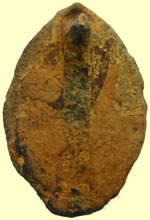  |
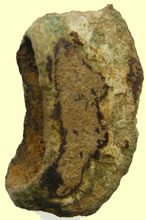 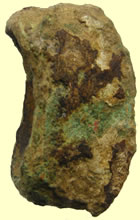 |
||||||||||
| c13thC medieval Sacrificial lamb of god vessica seal matrix | 1400BC Bronze Age socketed axe head fragment | ||||||||||
  |
  |
||||||||||
1199- 1216 John hammered silver short cross half penny Obv hENRICVS REX Rev AN+ IOH - Moneyer Iohan of Canterbury mint |
1247 Henry III hammered silver voided long cross half penny | ||||||||||
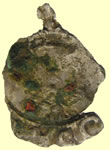 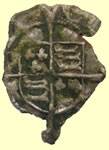 |
  |
||||||||||
| 1544-7 Henry VIII hammered silver penny - 3rd coinage, debased issue - facing bust type | 13thC Edward hammered silver long cross half penny Obv EDWA *** |
||||||||||
  |
 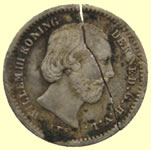 |
||||||||||
1180-1189 Henry II hammered silver short cross half penny - Class 1a Obv hENRICVS REX ReV NDE( + RA - Moneyer Ravdvl of London mint |
1850 Dutch Willem III Koning milled silver 5 cents | ||||||||||
  |
 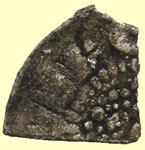 |
||||||||||
1216 Henry III hammered silver short cross half penny - Class 8b Obv hENRICVS REX Rev + IOHAN - Moneyer Iohan of Canterbury mint |
1247 Henry III hammered silver voided long cross farthing | ||||||||||
 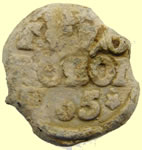 |
 |
||||||||||
| 1820 Russian lead bale seal | Georgian spur | ||||||||||
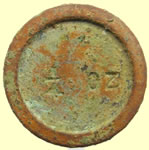 |
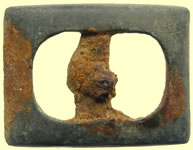 |
  |
|||||||||
| Victorian 1/4 oz. trade weight | 1660-1720 shoe or knee buckle |
Medieval annular brooch | |||||||||
 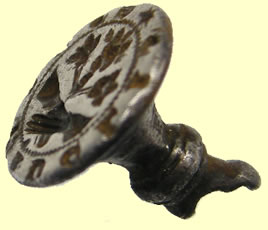 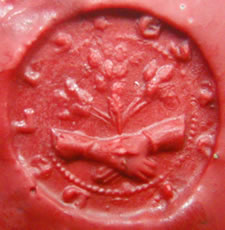 |
|||||||||||
Stunning c13thC medieval silver seal matrix - Crossed hands and flowers - reported as treasure to museum Lombardic lettering - Edward type E's and barred A's. Appears to be be "Esto Fidelis", which means 'be faithful' |
|||||||||||
2ndC Roman silver coin sent for ID - cooking to remove crust (Ed) We will need to see what appears on the obverse - particularly in the legend - before I can be completely certain who this is beyond "an Antonine woman". It's highly unlikely to be Faustina Sr. since the main body of her coinage is posthumous and the reverse type - PVDICITIA - would be a quality or virtue only of a living woman. I suspect Faustina Jr. for the following reasons: The shape of the head and the hair style seem to strongly suggest the Antonine era, and although it could be either Faustina Jr. (issued under Antoninus Pius or Marcus Aurelius), Lucilla or Crispina, the length of the obverse legend suggested under the encrustation is likely only on a coin of Faustina Jr. But we'll have to wait and see what the cooker reveals on the obverse. Mark |
|||||||||||
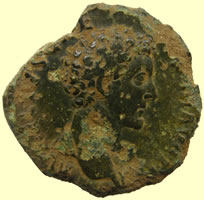  |
|||||||||||
Huge 1stC Roman AS coin in great shape - sent for ID 31.74mm, 15.57g I'll fire you off a quickly here and get back to you with more detail - this is a Sestertius of Marcus Aurelius as Caesar under Antoninus Pius - he was very young - no beard in evidence - so this is probably right around 138-140 when he was first adopted and elevated. The reverse shows his wife (I believe - or adoptive mother - as both were named) Faustina portraying "Fecunditas" or "Pudicitia", or some other of the semi-deity personifications of abstract value, and a child - either one of M. Aurelius' children or one of his adoptive-siblings. This would be part of what is known as "The Dynastic Series" wherin the Antonines all tended to put family members, particularly little children, on the reverses. One of the Faustinae is portrayed with 6 (my god!) children and infants in arms and gathered around he feet on a sestertius reverse. Mark I just realized I had intended to get back to you with some details on this piece. Too bad it's been in the plowsoil layer so long, if it were not so chipped around the edges, this would be a really decent sestertius. This is, as I already said, Marcus Aurelius as Caesar under Antoninus Pius. This piece dates to 148-9 if I am not mistaken. Although enough of the obverse legend is legible to be certain what it is - in this case: AVRELIVS CAE - SAR AVG PII F. Even though this date seems a little late for the beardless portrait, it doesn't seem that this reverse type appears before 148. The reverse legend - which is mostly all off-flan, unfortunately, leading to whatever uncertainty may be unavoidable - should read TR POT III COS II; PIETAS (in exergue) S - C. I was hoping I could tell you that the child was an early portrayal of Commodus or Lucilla, but Faustina and Aurelius' 1st child was born in 147. Lucilla was born in 149, at the end of Aurelius' 3rd Tribunician Powers era - or during the very last days this coin could have been struck bearing the presumed date, but well before she would have been portrayed standing at Pietas side rather than as a babe-in-arms - and Commodus did not come along until 161, so this is an allegorical child of some sort. Unfortunately, I don't know what the child signifies beyond Pietas' raised right hand "extending her influence over the children of the union", although Pietas can be assumed to be Faustina portrayed as Pietas. So, as close as I can come to being sure given the remaining legend fragments, for references this would be RIC II 1281a; BMC 1849; and SRCV 4807. Mark |
|||||||||||
 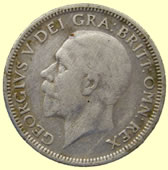 |
 |
||||||||||
| 1929 George V milled silver shilling (12 pence) | Medieval purse bar | ||||||||||
  |
  |
||||||||||
1351-77 Edward III hammered silver half penny - 4th coinage - Type 14 Obv + EDWARDVS REX AN Rev CIVI/TAS/LON/DON |
Medieval mount | ||||||||||
 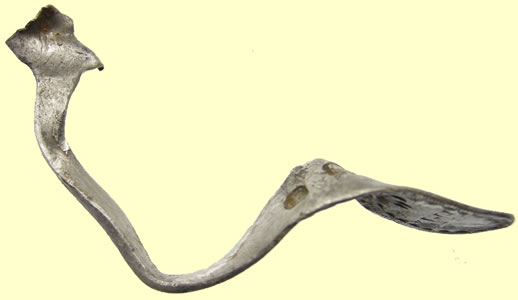  |
|||||||||||
1784 Initialled and decorated silver spoon - maker CH - London Charles Hougham London |
|||||||||||
 |
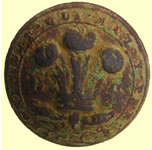 |
 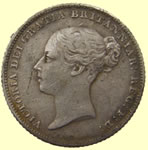 |
|||||||||
| 19thC Monogrammed button | Royal fusilier button ? Honi soit qui mal y pense (Old French: shame upon him who thinks evil of it)
|
1853 Victoria milled silver sixpemce | |||||||||
  |
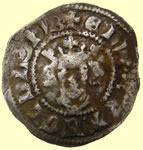  |
||||||||||
1247 Henry III hammered silver voided long cross half penny - Class IIIa Obv hENRICVS REX III Obv /MO/NC - Moneyer Adam of Carlisle mint |
1294-99 Edward Ist hammered silver penny - Egg wasted S - Class 8a Obv +EDWAR ANGL DNS hYB Rev CIVI/TAS/LON/DON - London mint |
||||||||||
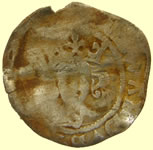 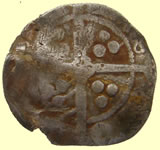 |
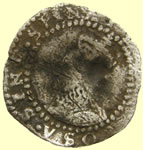 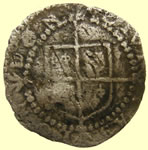 |
||||||||||
1356-1361 Edward III hammered silver penny Pre treaty- Quadrefoil with pellet in centre of reverse cross, large annulet on breast - Archiepiscopal issue - Series G, d Obv EDWARDVS **** Rev CIVI/TAS/EBO - York mint |
1572-3 Elizabeth 1st hammered silver penny | ||||||||||
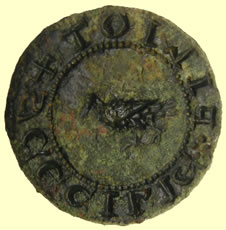 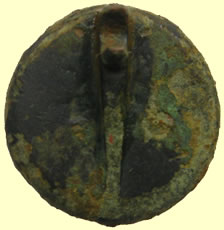 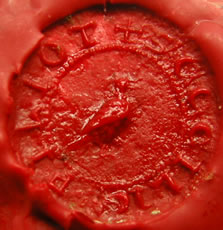 |
|||||||||||
Stunning 13thC seal matrix - hanging pendant type with back suspension loop + S CECILIE * PILIOT Seal of Cecile Piliot |
|||||||||||
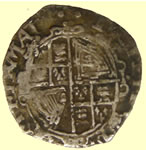 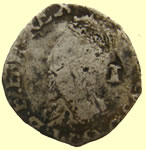 |
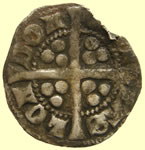 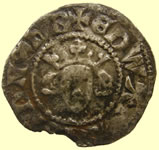 |
||||||||||
1641-3 Charles 1st hammered silver penny - mintmark 2 dots |
1300-1310 Edward Ist hammered silver penny - Closed E, outcurving h- Cross pattee - Crown 1 - Type 10 cf3 Obv +EDWAR ANGL DNS hYB Rev CIVI/TAS/LON/DON - London mint |
||||||||||
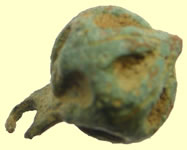 |
 |
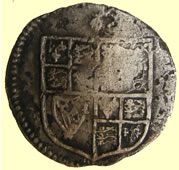 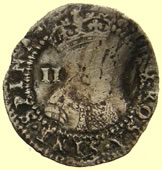 |
|||||||||
| 16thc Tudor button | Georgian watch winder | 1606-7 James 1st hammered silver half groat - Escallop mint marl | |||||||||
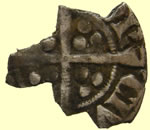 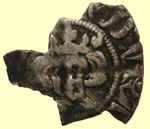 |
 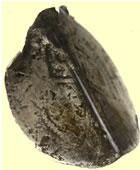 |
||||||||||
Medieval Edward hammered silver penny Obv +EDWR*** Rev CIVI/**/*OR - Canterbury mint |
1572 Elizabeth 1st hammered silver half groat | ||||||||||
  |
 |
||||||||||
| 1816 George III milled silver sixpence | 18thC toy cannon | ||||||||||
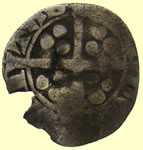 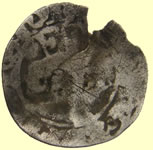 |
  |
||||||||||
13thC Edward hammered silver penny Obv ** hYB Rev CIVI/TAS/LON/DON - London mint |
1817 George III milled silver shilling | ||||||||||
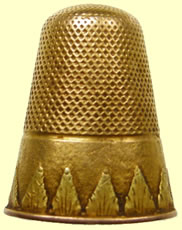  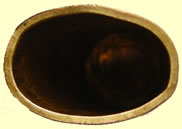 |
|||||||||||
Georgian solid gold thimble 4.67g, 22.75mm H |
|||||||||||
  |
  |
||||||||||
1427 - 1430 Henry VI hammered silver penny - Rosett- Mascule issue (ii) - Quatrefoil with pellet at centre of reverse cross - Satires by hair, Stops are satire and mascule Obv hENRICVS x REX ANGLIE Rev CIVI/TAS/EBO/RACI - York mint |
1696 William III milled silver love token - Norwich mint | ||||||||||
  |
  |
||||||||||
Copper half crown( 30 pence) - 1689 James II Irish 'gun metal' emergency coinage Obv 2 - JACOBVS II DEI GRATIA - Rev 2 Rev Crown and 4 sceptres , XXX above crown, month below MAG BR FRA ET HIB REX (date) |
1634 Charles 1st hammered copper rose farthing | ||||||||||
  |
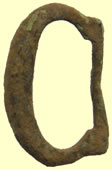 |
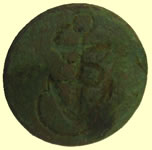 |
|||||||||
| 13thC Venetian hammered silver soldino coin | Medieval buckle | Capt / Commander - 1774-1787 |
|||||||||
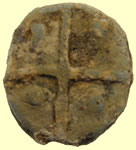 |
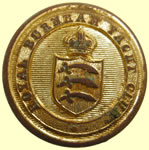 |
 |
|||||||||
| 15thC lead token - type 2 | Royal Burnham Yacht club | 18thC clog fastener | |||||||||
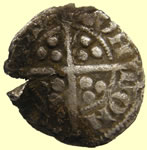 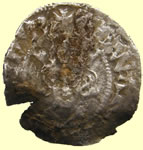 |
 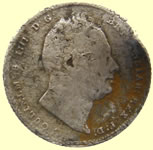 |
||||||||||
1344 Edward Ist hammered silver penny - Florin issue Obv +EDWAR ANGL DNS hYB Rev CIVI/TAS/LON/DON - London mint |
1834 William IV milled silver sixpence | ||||||||||
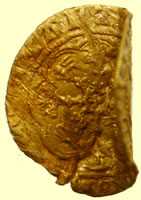 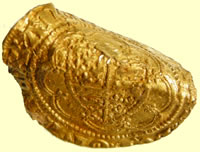 |
|||||||||||
1361- 69 Edward III hammered gold qtr noble - Treaty period - Lis in centre of reverse cross - Curule shaped X - Cross potent Obv + EDWARD DEI GRA REX ANGL London mint 1.59g, 18.43 mm |
|||||||||||
  |
  |
||||||||||
| 1818 George III milled silver sixpence | 1816 George III milled silver sixpence | ||||||||||
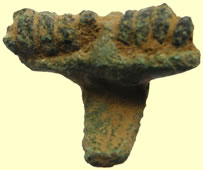  |
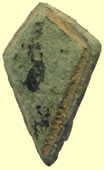 |
 |
|||||||||
| 2ndC Roman fibular brooch | 1500-1700 mount | Royal Army Service Corp cap badge | |||||||||
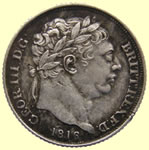 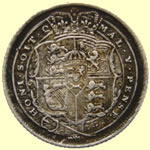 |
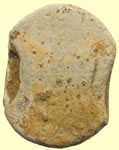 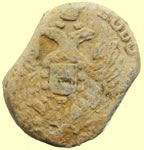 |
||||||||||
| 1818 George III milled silver sixpence | Post medieval German lead bale seal | ||||||||||
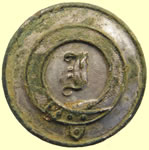 |
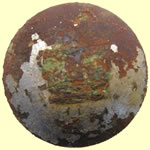 |
  |
|||||||||
| 19thC livery button | General post office button | 1485- 1509 Henry VII hammered silver half groat - Long cross forchee Archbishop Morton - rosette stops in legend Rev /TOR/ - Canterbury mint |
|||||||||
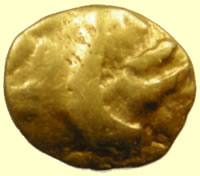  |
|||||||||||
70BC Morini Boat Tree type Celtic gold qtr stater - sent to CCI for recording 1.45g,12.54mm Reported as hoard to museum |
|||||||||||
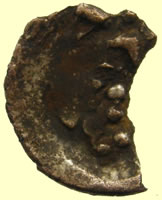 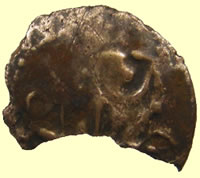 |
|||||||||||
Trinovantes Celtic gold 1/4 stater 50BC - sent to CCI for recording - reported as potential hoard 0.70g, 13.65mm |
|||||||||||
 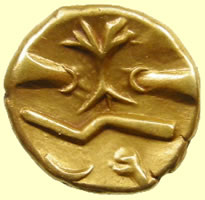 |
|||||||||||
70BC Morini Boat Tree type Celtic gold qtr stater - sent to CCI for recording 1.46g, 11.41mm Reported as hoard to museum |
|||||||||||
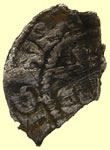 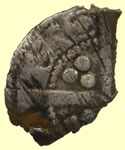 |
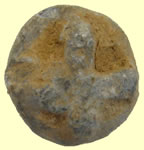 |
||||||||||
Medieval Edward hammered silver penny Obv **** DNS hYB Rev CIVI/TAS/*** |
Medieval lead gaming piece | ||||||||||
  |
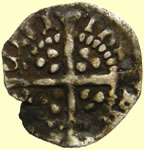 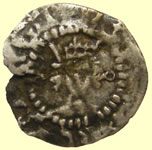 |
||||||||||
| 1215 Henry III hammered silver short cross halfpenny | 1414 - 22 Henry V hammered silver half penny - broken annulets by hair Obv +hENRIC x REX ANGL Rev CIVI/TAS/LON/DON - London mint |
||||||||||
 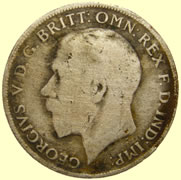 |
  |
||||||||||
| 1922 George V milled silver florin (24 pence) | 1553 Mary hammered silver groat | ||||||||||
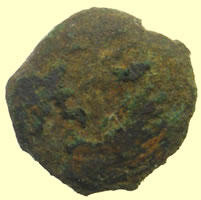 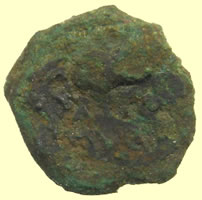 |
|||||||||||
10- 40 AD Cunobelin Celtic bronze unit sent to CCI for recording .CCI 13.0723 Right facing horse |
|||||||||||
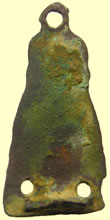 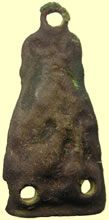 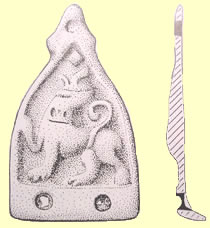 |
|||||||||||
Late Saxon c10thC stirrup strap mount Class A Type 11a Sub triangular mount depicts a Lion looking upwards with its front paw raised and tail curled between its legs and over the backESS-7FC982 STIRRUP & ESS-7FCBB7 STIRRUP |
|||||||||||
  |
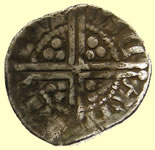 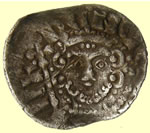 |
||||||||||
| 13thC lead seal matrix | 1247 Henry III hammered silver voided long cross penny - Class Vc Obv hENRICVS REX III Rev WIL/LEM/ONC/ANT - Moneyer Willem of Canterbury mint
|
||||||||||
|
|||||||||||
| Medieval silver ring with rubies - reported as treasure to museum | |||||||||||
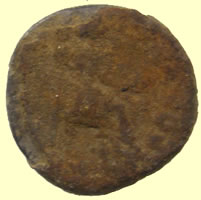 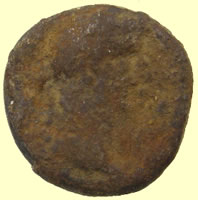 |
  |
||||||||||
| 2ndC Roman silver coin - cooking to remove crust | 2ndC Roman knee brooch |
||||||||||
2ndC Roman silver coin - cooking to remove crust - sent to Mark Lehman for initial ID and just resent it to him now the crust is coming off
This is Elagabalus, definitely. 221 AD, Mint of Rome. Reverse which is actually: Providentia standing left, holding rod and cornucopiae, globe at feet - this also changes the references to the following: RIC IV 42; RSC 189b; SRCV 7534. Obverse: IMP ANTONINVS PIVS AVG. Laureate draped and cuirassed bust right. |
|||||||||||
 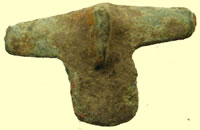 |
|||||||||||
| 2ndC Dolphin type Roman fibular brooch | |||||||||||
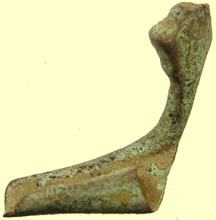 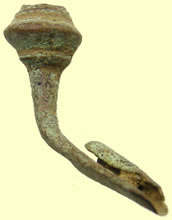 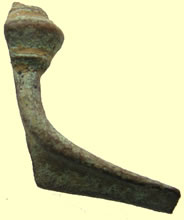 |
|||||||||||
| 2nd/3rdC P shape Roman bow brooch | |||||||||||
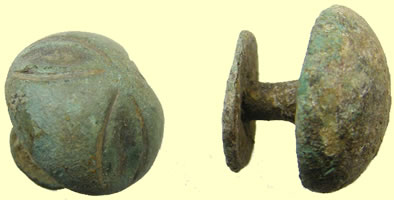 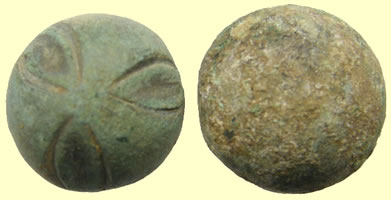 |
|||||||||||
| Not seen this type of large decorated domed mounts before - needs research | |||||||||||
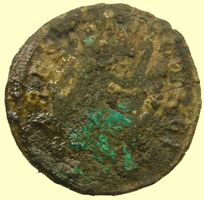  |
|||||||||||
Just cleaned up what looked like a crusty bronze and it is a silver washed Roman with great detail - just sent off to Mark Lehman for his views Well, you weren't, technically speaking, incorrect to call this a "silver Roman" as it was made to be a silver denomination. Antoninianus (double denarius) or as some folks call them at this point in the 3rd century, "Aurelianianus". Although Aurelian did make significant reforms which pulled the fragmenting Western Empire together for another 2 centuries or so at a time when everything could have come apart and the descent into feudalism have begun all the earlier, I won't comment on how silly this particular re-naming of the Antoninianus is. He did reform the coinage, stabilizing the size and purity - and increasing the silver content slightly as well as introducing new silvering techniques which were far more long-lasting. However, the total silver in it was highly unlikely ever to have been more than about 5% total - and so, unless you want it to come out "orange" like the other antoninianus which you sent the photo of today - I would give it a pass on "cooking". This particular piece is from one of the successors of Aurelian - one of the so-called Illyrian Emperors - Probus, 276-282 AD. As far as I can tell - and it's pretty obvious at first glance that not much of the reverse is clearly visible - the reverse type is RESTITVTOR EXERCITI - although it's not altogether impossible that it's RESTITVTOR ORBIS or RESTITVT ORBIS - just hard to tell at this point how the legend ends. In either case it's one of those 2-figure "presentation" scenes with either (for the ORBIS types) a female figure personifying (? what? - depends on the details we can't see) some allegorical concept presenting a wreath to Probus who stands facing her. Or, if it's the EXERCITI types, Mars (most likely) presenting a globe - possibly with a figure of Victory atop it - to the emperor. Probus tended to "get on a kick" with his reverse types and issue dozens of very minor variations in obverse bust, reverse scene, wording and spelling of legends, field marks and exergual lettters, from eight or ten mints, so even when everything is completely clear and visible it's often a chore to figure out exactly which mint any specific variety should be attributed to. If it's the EXERCITI type, possibly Siscia or Cyzicus - the ORBIS types were common and numerous at all the mints. Mark Correction to the last - taking another look at the obverse legend, I am now going to say this is Carus, 282-283 AD. rather than Probus. Except that he was nowhere nearly so prolific a minter as Probus and this is far more likely to be RESTITVT ORBIS than any of the other possibile reverses I previously named, everything else is still pretty much the same as I said in the last email. Carus is a good bit scarcer than Probus, too - and neither of them is exactly "over-represented" in the typical range of finds you show me. Mark |
|||||||||||
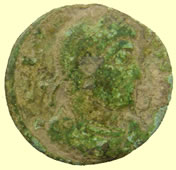 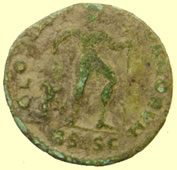 |
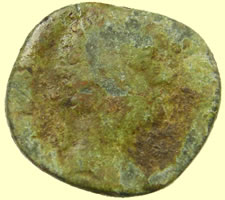  |
||||||||||
4thc Roman bronze with great detail sent for ID This is the typical billon restored Centenionalis of either Valerian I or Valens (fairly unlikely, but there is a small possibility it might be Gratian as well). The reverse type is GLORIA ROMANORVM with the emperor dragging a captive and carrying a labarum. The mintmark is for the mint at Siscia - which was enormously prolific in this period. The RIC for this period requires 6 or 7 pages of charts to list all the variants and combinations of field marks and exergual mint marks for the Centenionales of Siscia from this era. The exergual marks appear to be fairly simple - BSISC with no field marks. That means it is relatively early in the series and so dates to around 364-368 AD. Unfortunately I can't be certain who's on the obverse at this point - not enough of the legend is visible, but my guess - given the spacing of the few letters I can see - would be that Valens (364-378 AD) is the more likely possibility. Mark |
Huge Sestersius sent for ID - very unusual obverse. 20.24g, 29.40mm Chris, Luckily this is a rather unusual reverse type - ie: only associated with one emperor - so that was a big help in determining which of the bearded 2nd century emperors we're dealing with. The reverse type is Minerva walking to the right, looking back, and carrying a branch in her right hand, a shield and spear in her left. The rather long legend none of which appears on this specimen would be MINER AVG P M TR P XIIII IMP VIII COS V P P S - C. That identifies this one as Commodus and the type dates to around 191, towards the end of his rule when he began to seriously lose it. Eventually believing himself to be the reincarnation of Hercules, he even went so far as to have himself portrayed on the coinage wearing the Herculean lion-skin headdress al-la Alexander the Great and competed in the wild animal killing events in the arena. It wasn't too long before he was done-in by a (formerly) trusted retainer as part of a palace intrigue, stabbed in the bath, New Years day, 193. Mark |
||||||||||
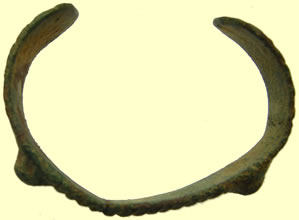  |
|||||||||||
| Early copper bracelet - Roman ? one for the museum to look at | |||||||||||
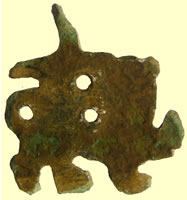 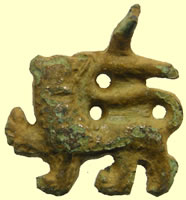 |
  |
||||||||||
| Medieval Lion pendant | Interesting early skier pewter button or Scott of the Antarctic expedition ? |
||||||||||
  |
 |
||||||||||
| Roman mount | 17thc lead token | ||||||||||
 |
 |
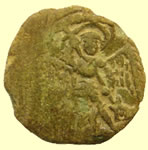 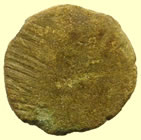 |
|||||||||
| Medieval trade weight | 18thc toy cannon | 15thC Angel coin weight | |||||||||
  |
  |
||||||||||
| 13thC seal ring - Initial R | At any rate, there's not a lot I can say about this piece - I will say I believe it's Hadrian, from the portrait, but as you can see, there is no visble legend and almost nothing at all visible on the reverse. Hadrian's reign was from 117-138 AD. and he did some construction in your part of the World, If I recall correctly. |
||||||||||
 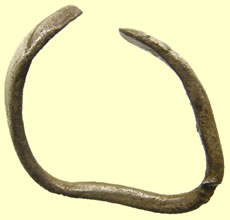 |
 |
||||||||||
| 18thC silver ring | Military badge - Army Service Corps badge. |
||||||||||
 |
  |
||||||||||
| 18thc toy cannon | Georgian double sided fob seal - Jewish profile head, Lion on reverse | ||||||||||
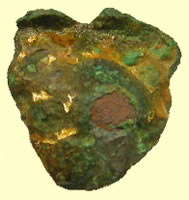 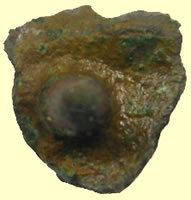 |
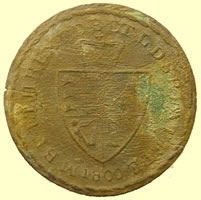 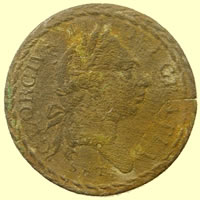 |
||||||||||
| Medieval gilded and enamelled shield mount | 1800 George III gold guinea gaming token | ||||||||||
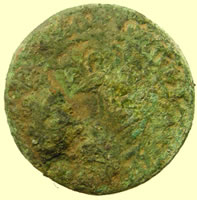 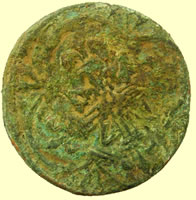 |
 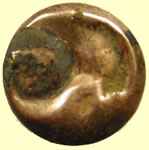 |
||||||||||
| 1340 French Jetton - Crown type | Edwardian rose gold hollow stud 0.48g |
||||||||||
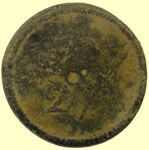 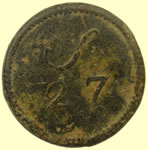 |
  |
||||||||||
1670-1685 coin weight - 27 shillings to weigh Portuguese 4000 Reis - moidore Obv S 27 Simple Script S beaded/toothed border |
1670-1685 coin weight - 21 shillings to weigh gold guinea Obv S 21 Simple Script S beaded/toothed border |
||||||||||
  |
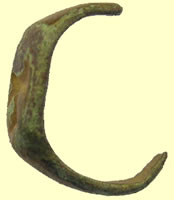 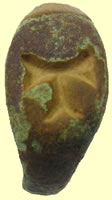 |
||||||||||
1679 Charles II milled silver three pence |
13thC medieval seal ring | ||||||||||
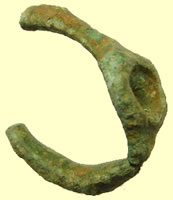  |
  |
||||||||||
| 2ndC Roman bronze finger ring | 1272 Edward 1st hammered silver penny EDWAR ANGL DNS HYB Rev CIVITAS LONDON - London mint |
||||||||||
   |
|||||||||||
| c13th C medieval enamelled harness pendant |
|||||||||||
    |
|||||||||||
Cooked Roman silver sent for ID Impressive find! By now, however, you should recognize the so-called "Tribute Penny" - it shows Livia(?) seated - and here there is some question as to who was intended, whether an actual person, a deity or a personification, or possibly even an actual person portraying a personification. Livia is the standard guess, however. This type was virtually the only pattern of denarius Tiberius issued during his lengthy reign from 14-37. I don't have a reference which breaks it down as to assumed dating, but some base dating parameters for these on the style of the portrait and the kind of legs that are on the chair on the reverse. The decorations on the legs of this chair are unlike any I have ever seen on these before, BTW. What I would personally guess, based on the resemblance to Augustus of the portrait on this piece, that it is from earlier in his reign. On his very first coins his portrait is virtually indistinguishable from Augustus' since he was somewhat reluctant to assuming the purple in general and feared that if he made too geat of a change in familiar representations of the Imperium he would not be accepted by the people. It wasn't until later in his reign that his portrait began to take on the more distinctive and "mature" features which seem to have been closer to the way he actually looked. Mark |
|||||||||||
More finds on 2013 Sept Finds page 1 More finds on 2013 Sept Finds page 2 More finds on 2013 Oct Finds page More finds on 2013 Oct2 Finds page |
|||||||||||
 |
|||||||||||







